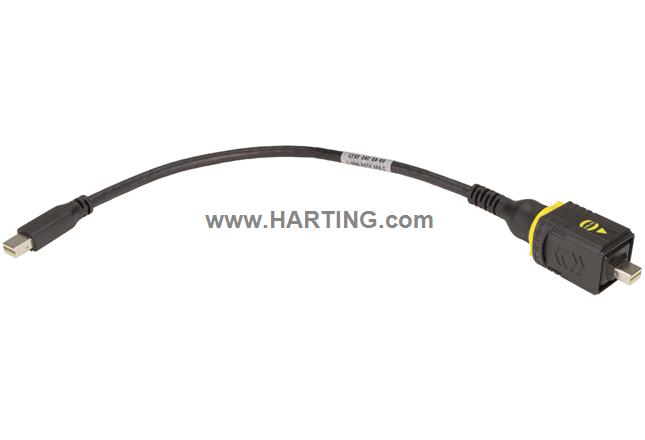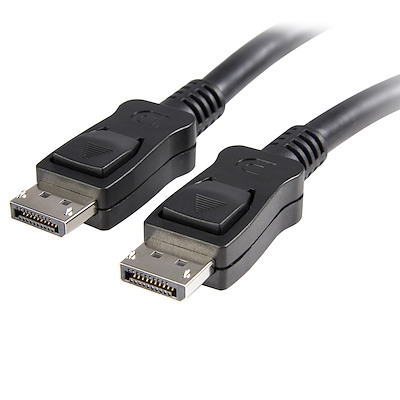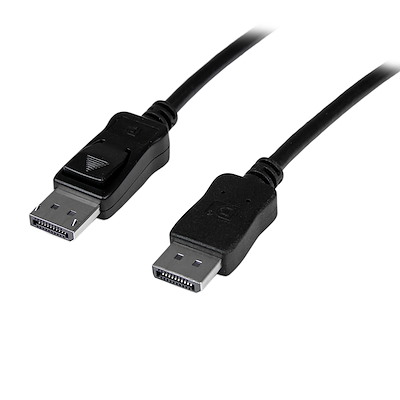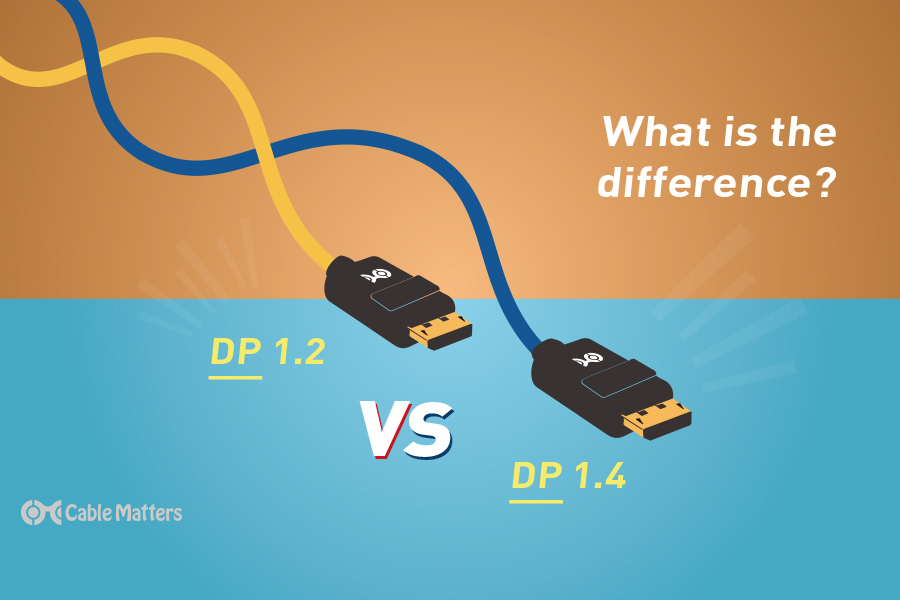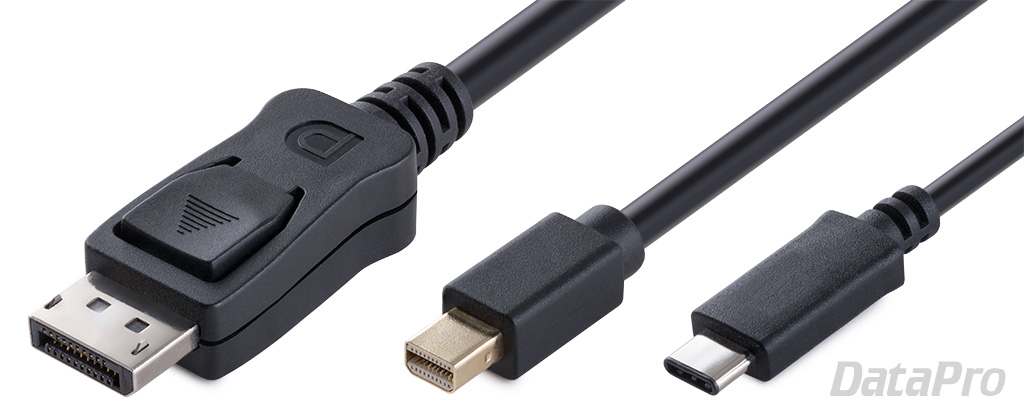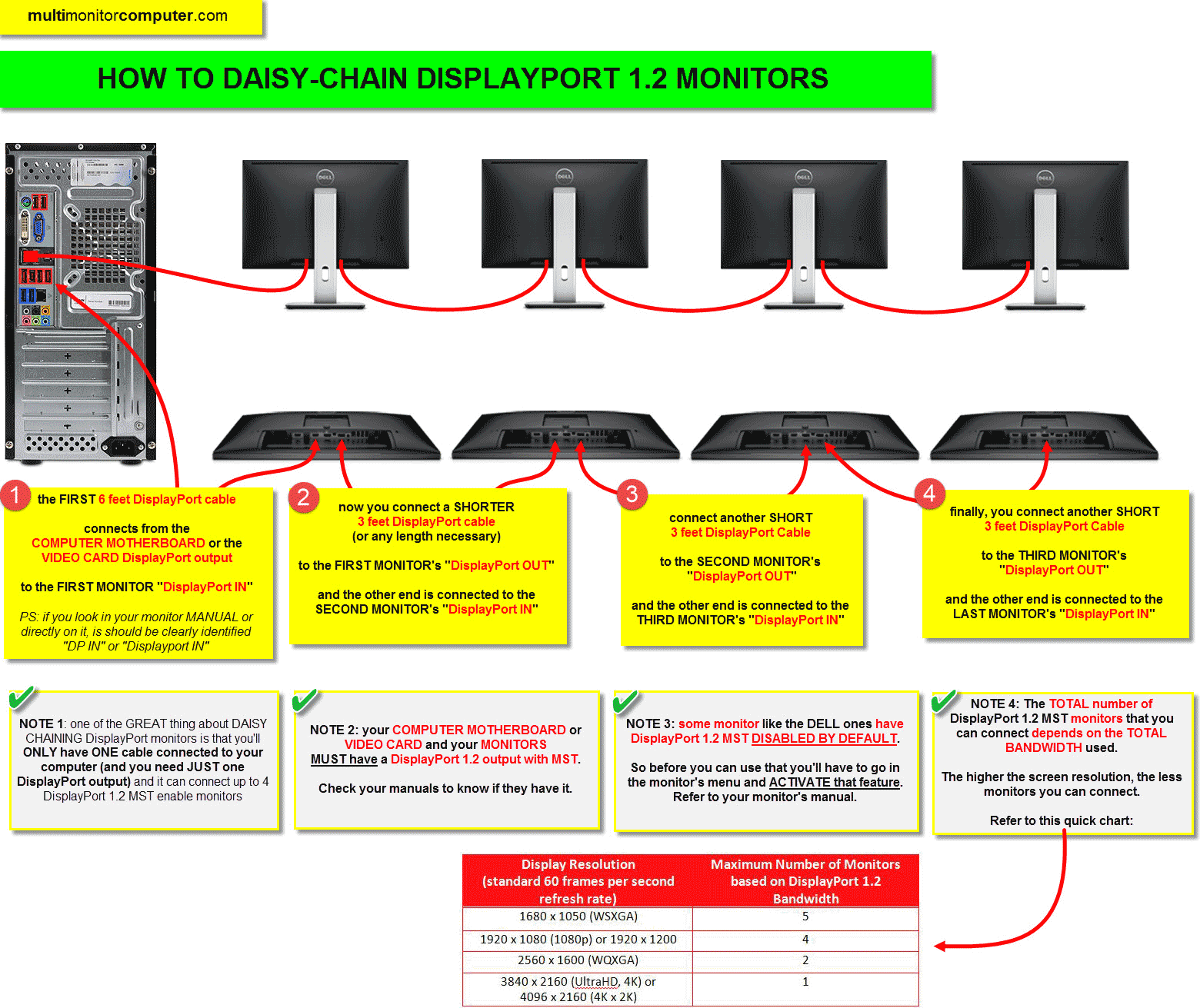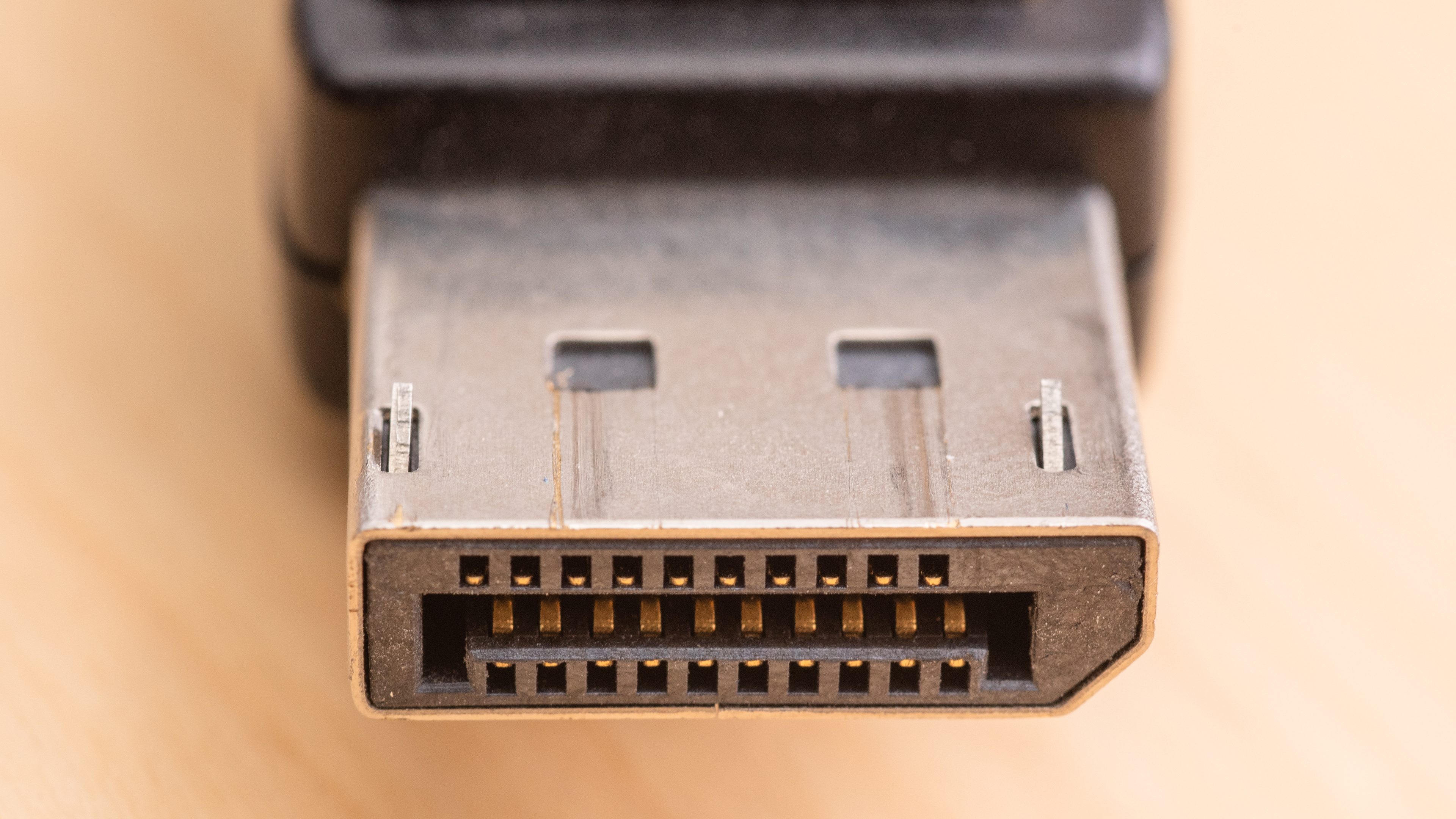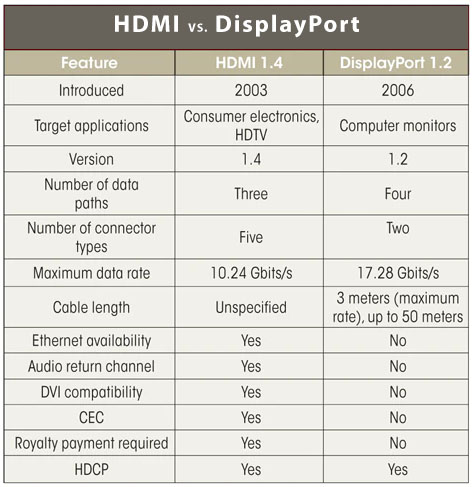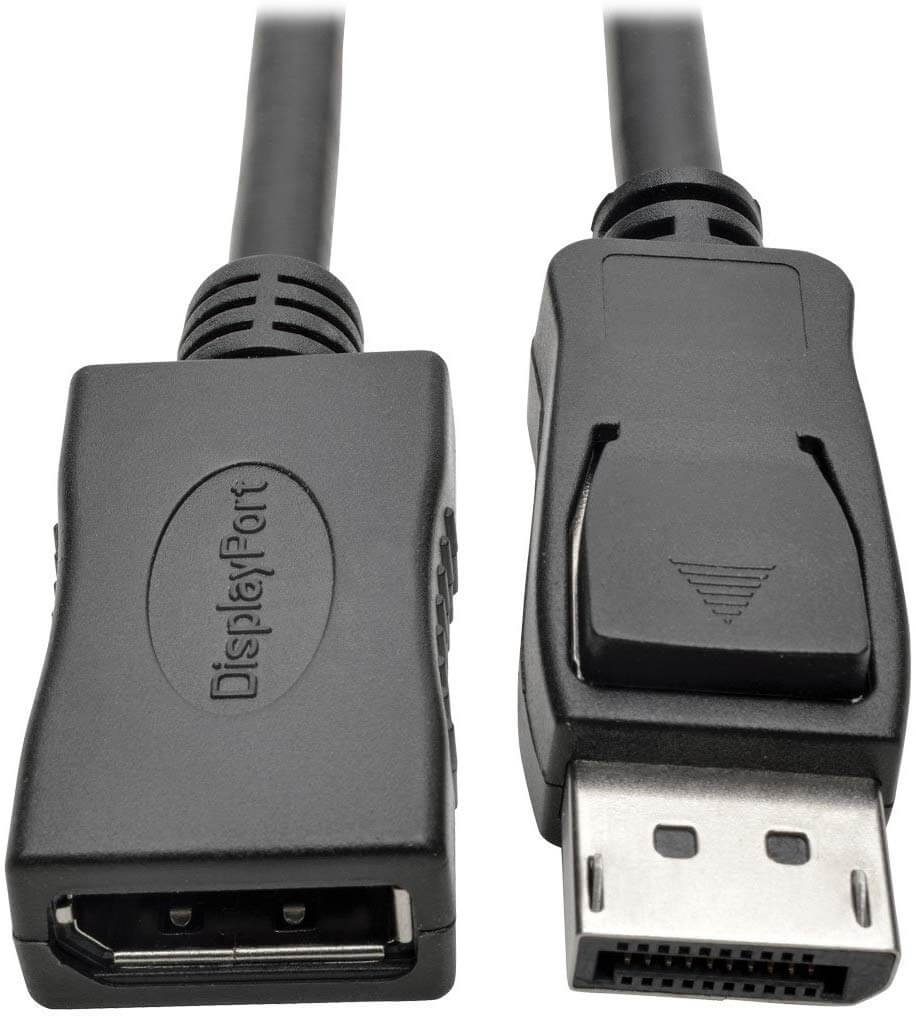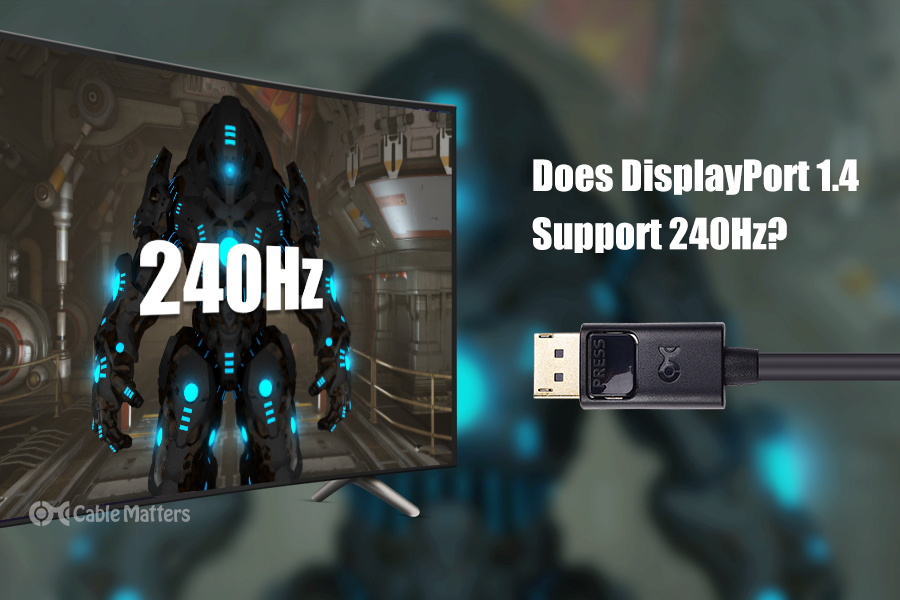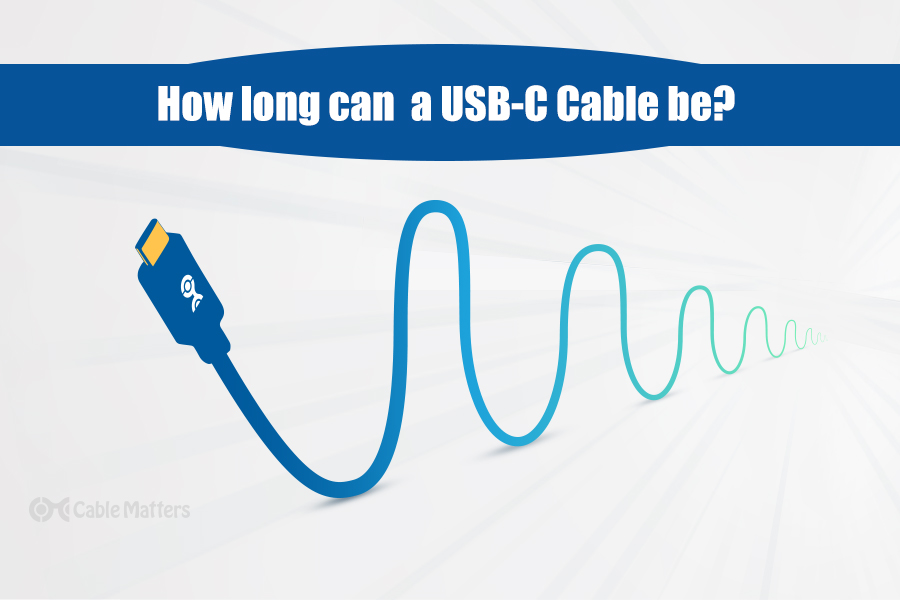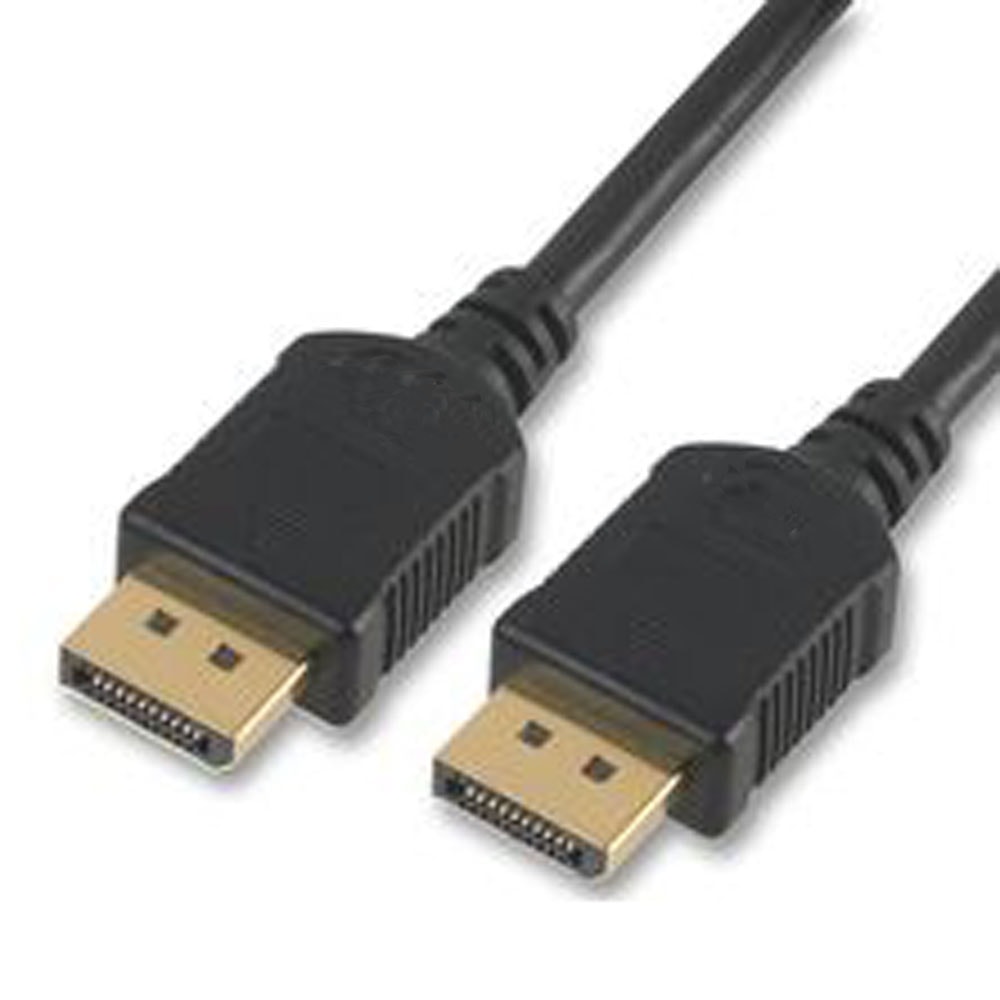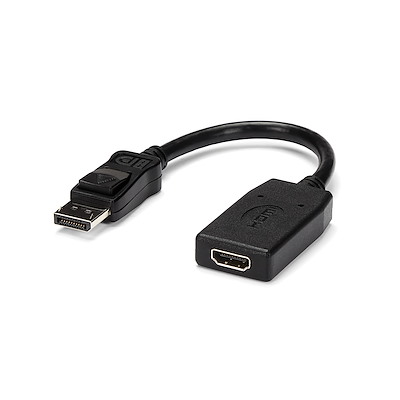Because displayport was so ahead of its time in terms of bandwidth and resolution capability when it was launched strict limits were set on what cable lengths could be certified.
Displayport cable length limit.
The displayport standard does not specify any maximum length for cables though the displayport 1 2 standard does set a minimum requirement that all cables up to 2 meters in length must support hbr2 speeds 21 6 gbit s and all cables of any length must support rbr speeds 6 48 gbit s.
When using cables with two different ends the distance limit will be subject to whichever type of connector has the shorter maximum distance.
A standard displayport cable including the so call displayport 1 1 cables will work for any displayport configuration including the new capabilities enabled by displayport 1 2 including 4k and multi stream capabilities.
This decision limited confusion in the market place but set the maximum limit for a certified displayport cable at 5 metres.
Using anything beyond that increases the chances of the risks mentioned previously.
For example a standalone hdmi cable can go up to 65 while a standard displayport cable can go up to 15.
Maximum length of displayport cable for optimal performance when using display port cables the length of the cable can greatly impact display quality and create data loss.
Therefore an hdmi to displayport cable will be stuck at 15 for its maximum length.
Maximum cable length isn t something that s defined in the standard if that s what you re hoping for.
It just depends on manufacturing quality and tolerances.
Therefore an hdmi to displayport cable will be stuck at 15 for its maximum length.
According to dell the maximum recommended cable length to ensure optimal performance is 1 8 meters 6 feet.
All standard displayport cables support rbr hbr high bit rate and hbr2 high bit rate 2 which can support 4k at 60hz.
When using cables with two different ends the distance limit will be subject to whichever type of connector has the shorter maximum distance.
